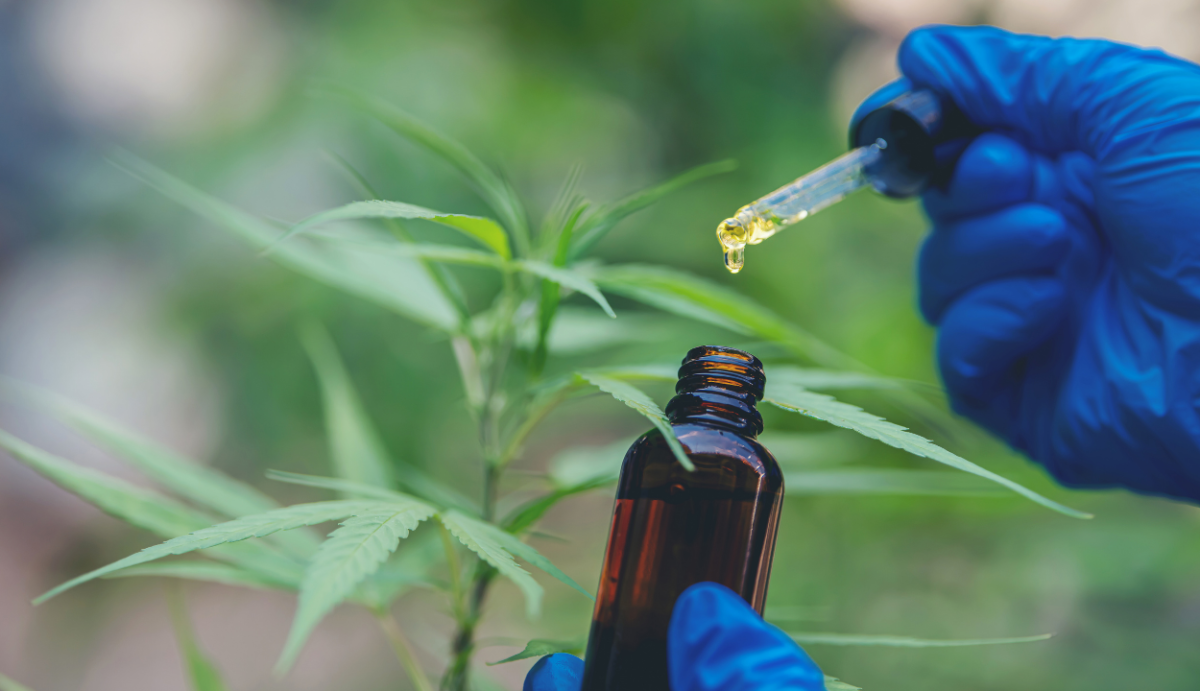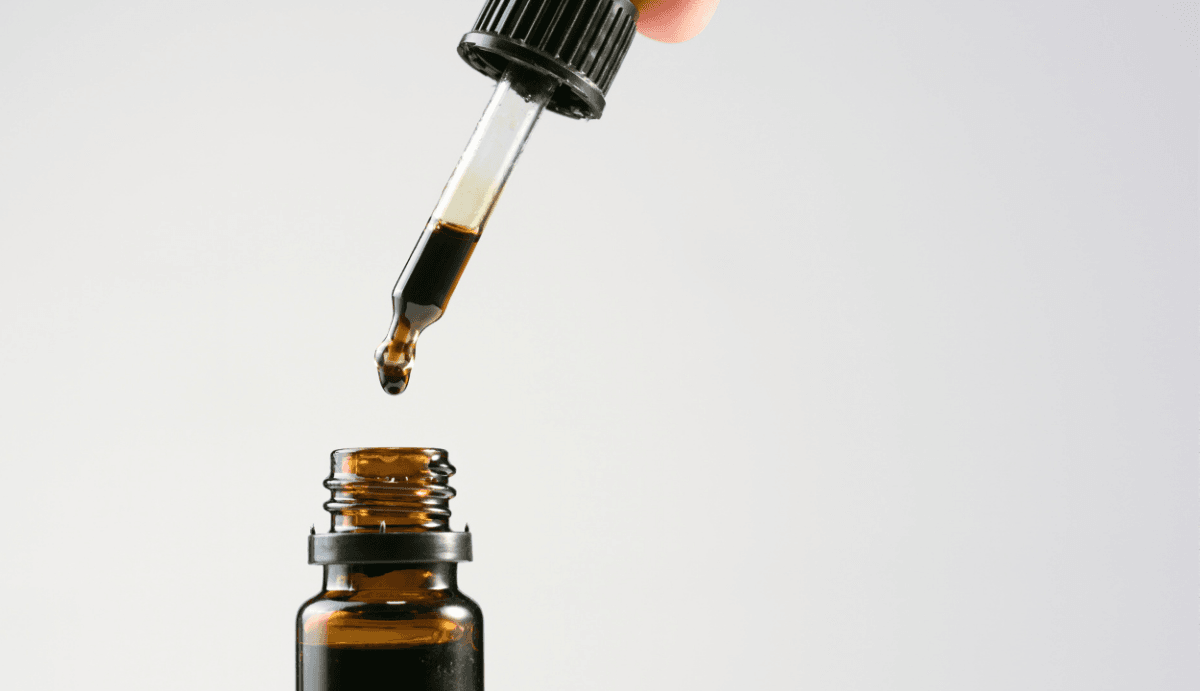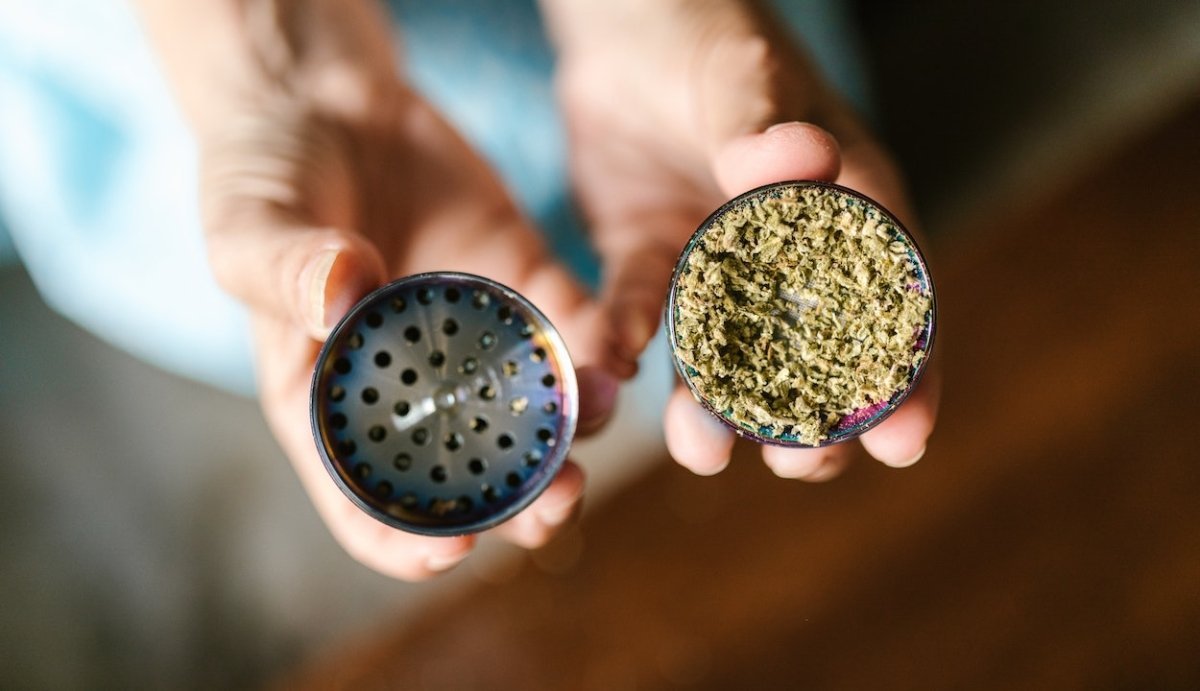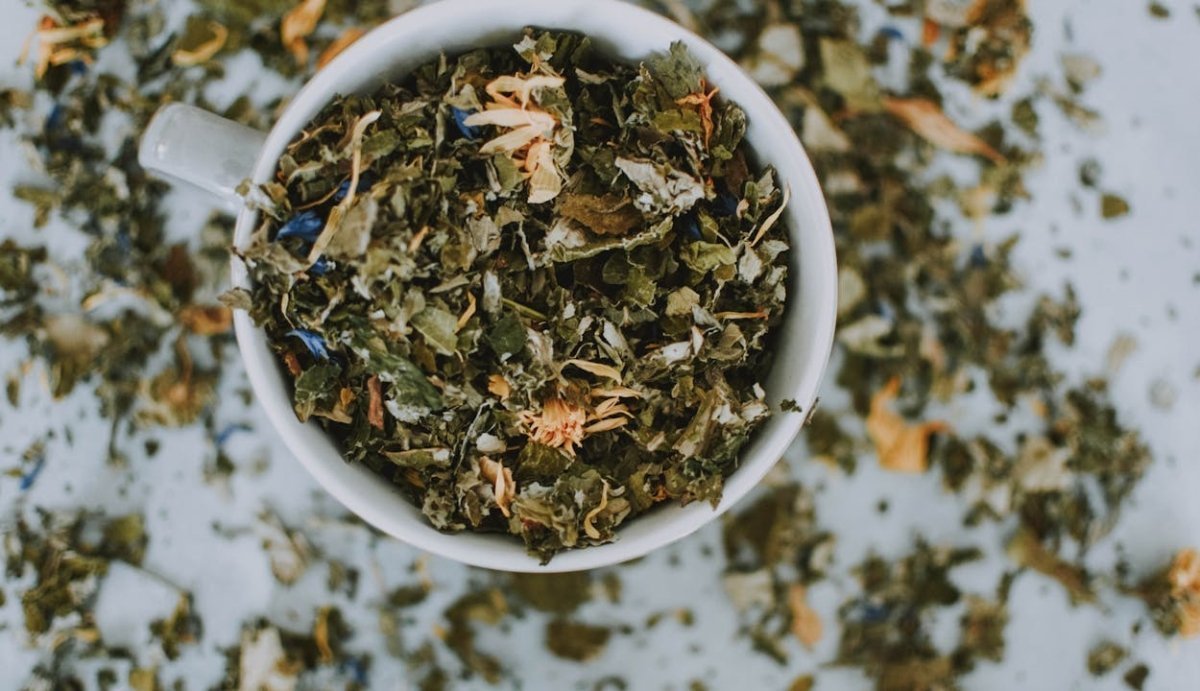Your Cart is Empty
FREE SHIPPING ON ALL ORDERS $75+
CBD oil is everywhere, and you’ve probably heard about at least a few of its potential benefits. What isn’t common knowledge (but is equally important to understand if you intend to use CBD) is where CBD comes from and what goes into each bottle of CBD oil or bear-shaped gummy dose.
So, how is CBD oil made? And does the way that CBD is made matter that much?
Actually, it does. The way that CBD is made directly impacts the price, potency, efficacy, and flavor of a product. It also allows CBD brands to design unique and useful products that target specific therapeutic effects, boast pleasant and quirky flavors, or offer added benefits like a multivitamin and CBD combo dose.
Want to know how it all happens? We’re going to break down how CBD oil is made in this step-by-step, thorough guide:
Step by Step Guide to How CBD Oil is Made:To answer the question “how is CBD oil made?”, we have to dig all the way back to the basics: planting seeds. Because CBD is sourced from hemp, the first step in production is obviously planting the hemp crops.

There are a variety of hemp strains available, and different strains may be grown for different purposes, like creating products with specific terpene profiles.
After seeds are sewn, they need to be watered and tended with care for approximately four months. During this time, a responsible farmer will monitor water quality and use only organic nutrients and natural pest deterrent methods (as opposed to chemical pesticides).
Hemp is an amazing plant for a variety of reasons. The first (and most relevant to this topic) is that it generally contains between 10-30% CBD alongside a collection of other minor cannabinoids and terpenes.
Moreover, hemp plants can be planted really close together, which means that a small amount of farmland can produce a large yield.
Plus, 100 acres of hemp can absorb 22 tons of CO2. (For comparison, the same area of trees absorbs roughly 1-10 tons of CO2 each year.)
Hemp’s versatility means it can be grown in every region of the U.S. In warmer climates, two hemp crops can be grown in a year (because it has a short growing period), which, effectively doubles its CO2 uptake.
A survey from Cannabis Reports found that Montana, Colorado, Kentucky, and Oregon were among the top hemp producers in 2020.
Farming quality is incredibly important to the quality of the final CBD products. This is because hemp is a bioaccumulator, which means that it accumulates materials naturally available in the soil. This means that while hemp can suck up nutrients, it can also suck up toxins like heavy metals, pesticides, and microbial organisms.
At Vida Optima, we source our hemp from farms in states with leading hemp agriculture programs, including Kentucky, Colorado, and Oregon.
Our source farms use high quality hemp material grown in clean soil under optimal growing conditions. All of our raw hemp material is tested as soon as it reaches our manufacturing facility to ensure that it's free of harmful contaminants, resulting in a cleaner final product.
The next step in how CBD oil is made seems obvious—the hemp needs to be harvested—but there are technicalities.
The basics are simple. Hemp can be harvested by hand to protect the delicate buds, or it can be machined harvested (which is much more common).

Sometimes, the plants are “topped” by hand. This means that the largest flower that sits on top of the plant is trimmed off by hand. After topping a plant, the farmer may allow the remaining plant to grow for a few more days to a week, which allows the buds beneath to get extra sun exposure that allows them to fully mature.
Generally, the entire biomass is harvested, meaning all parts of the plant. Then, the plant parts are sorted as necessary before CBD can be produced. Some manufacturers prefer to use the entire biomass, while others use only flowers (which have the highest concentration of CBD).
The material used has a direct impact on the potency and cost of the final product. In many cases where only the flower is used, the remaining biomass may be sold or used for other purposes, like making paper, oil, or textiles.
Growers obviously want to wait until hemp is at its peak to harvest, which means the
CBD content is at its highest. However, waiting too long can result in higher THC levels that exceed the legal limit (0.03%). When that happens, the entire crop has to be destroyed or the manufacturer risks losing their hemp license.
In order to harvest at just the right time, hemp farmers usually test their hemp at various points throughout the growing process. In most states, sampling is required by the Department of Agriculture in order to ensure that crops meet the THC threshold for legal hemp material.
After harvest, the CBD material heads to a manufacturing facility where the magic happens—raw hemp becomes CBD through one of multiple extraction techniques. There are a variety of different extraction methods used, and they each have different benefits and drawbacks and produce different products. Here’s a quick look at how CBD oil is made:
There are three primary extraction techniques used to make CBD oil, including:
Learn more about the CBD extraction process by reading “Hemp and CBD Extraction Techniques.”

It's tempting to say that the extraction method doesn't matter all that much. After all, any of the extraction methods listed above will result in a CBD hemp extract material that can be used to make a variety of different CBD products.
There have been no studies to compare extraction methods directly, but some extraction methods are thought to be superior to others.
For example, alcohol extraction or solvent-based extraction often leave a solvent behind but then needs to be carefully refined from the final product so that it is not concentrated and/or ingested.
For this reason Supercritical CO2 extraction is often preferred by quality manufacturers because it produces a potent, clean hemp extract material that's free of residual solvents. It does require hi-tech, expensive equipment, but it reduces risk and possibly increases the purity and potency of the final product.
After extraction, CBD products sometimes undergo another process (or series of processes) to further refine the extract material. That’s because some extraction techniques may leave behind unwanted materials (like chlorophyll, which has a strong plant-like flavor).
In other cases, the refinement process may be used to alter the cannabinoid and terpene profile of the extract material, which can help create a variety of different formulas. For instance, CBD isolate is made through a refinement process that removes all material that isn’t CBD, including THC and other terpenes, which results in a product that is usually at least 99% pure CBD.
This refinement process may also add certain things, like targeted terpenes or minor cannabinoids. Our Clarity CBG Mood tincture is refined to offer a moderate dose of cannabigerol (CBG). Terpenes are also sometimes added because they offer unique therapeutic effects that can help create a more targeted product.

The most common reason why an extra refinement method is used after extraction is to alter the primary formula, meaning to create either a full spectrum or CBD isolate formula. There are distinct differences between the two:
Full spectrum CBD products contain CBD plus a varied profile of minor cannabinoids that occur naturally in the hemp plant, like CBC, CBG, CBN, THC, and more. It may also contain a variety of different terpenes that alters the flavor and therapeutic profile of the product.
Full spectrum CBD products are sometimes said to be more effective for most therapeutic uses due the entourage effect, a phenomenon where cannabinoids and terpenes all react synergistically to each other.
Alternately, CBD isolate products are heavily refined to remove all of these naturally occurring compounds. CBD isolate is a good option for those who are worried about ingesting the trace amounts of THC found in full spectrum products, though it takes significantly higher amounts of THC to produce any psychoactive effects or show up on a drug test.
Looking for full spectrum CBD products? Check out our Vitality CBD Collection, our premium line of CBD oils, gummies, edibles, and more.
Finally, the moment you’ve been waiting for—how CBD is actually made.
After the CBD is extracted from the raw hemp material and refined to the manufacturers liking, it’s used to produce a final product (or a variety of different products).

This step includes added things like carrier oils, flavorings, vitamins, sweeteners, or a series of other digestible ingredients to create a CBD oil product that is truly unique and useful. This step is genuinely open ended, so we won’t try to cover all the possibilities, but here are the basics:
There are thousands of unique CBD products on the market, and this is the step that makes all the difference. The most important step (for the consumer, at least) is the next one:
We just highlighted the variety of opportunities to create unique CBD products, which gives insight to the varied and sometimes shaky market available to consumers.
Unfortunately, CBD manufacturing is not yet well regulated across the industry, which leaves room for manufacturers to use less-than-desirable ingredients or to mislabel or mislead consumers about their products.
That's why third-party lab testing is the most important manufacturing step to ensure product quality, label transparency, and consumer safety.
Although manufacturers may also sometimes test their products in-house, third-party lab tests are carried out by a third party laboratory, as the name implies. This is to ensure that the testing is done by an unbiased source.
These lab tests result in a Certificate of Analysis, or a document that provides information about the product's potency and purity.
It is not required for brands to make this information available to consumers (and in many cases is not required that they run third-party tests at all), but a quality-conscious consumer should always seek out brands that offer third party test results for every product batch.
A truly transparent brand will post these test results on their website or include them alongside product packaging.
Lab testing is incredibly important, and many high-quality brands will test their products at multiple points throughout the manufacturing process.
At Vida Optima, our raw hemp material is first tested for potency and purity to ensure that it's not contaminated with heavy metals or pesticides.
Our experienced cannabinoid extraction technicians visually inspect the hemp material throughout each step of the manufacturing process. Final batches are tested in-house and by a third-party lab. (Check out our CBD Collection to see our lab tests on every product page.)

The final step in how CBD oil is made is packaging and labeling each product. This step is arguably as important as lab testing as it conveys crucial information to the customer. CBD labels are as varied as the product formulas available, but they should always contain some basic information, including:
Additionally, many labels will offer dosage suggestions, information about the hemp source, and possibly a scannable code that links to the product's test results.
The label is only part of the equation—CBD products also need to be packaged appropriately. For edibles, this usually means airtight bottles or individually wrapped pieces.
For CBD oil tinctures, the best packaging option is an opaque glass bottle, usually with a dropper lid attached. CBD vape oil requires special packaging practices, like that they need to be housed in cartridges made from heat-safe materials, like glass or ceramic.
In short, the way that CBD is made matters because industry regulation is inconsistent. That means you can’t simply assume that a CBD product is safe and effective because it made it to the shelf of your local convenience store.
The FDA is still working out regulations and has yet to weigh in any final rules for CBD production. Most states have some sort of hemp agriculture plan in place, and while some are more thorough than others, most are still widely lax and inconsistent.
That means it’s up to you to determine if the product you buy is safe and worth the money.By investigating the brand, their values, and their manufacturing process, you can determine whether they genuinely have the consumer’s best interest at heart.
The steps outlined above are a general overlook of how CBD is made, but some steps are absolutely crucial—like proper labelling and lab testing—to ensure consumer safety.
Want to skip the footwork and buy CBD today? You can read about our values and production process on our About Us page, or check out our Vitality CBD Collection to view our third-party test results on every product page.

Comments will be approved before showing up.



